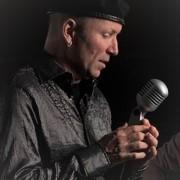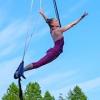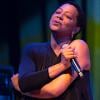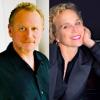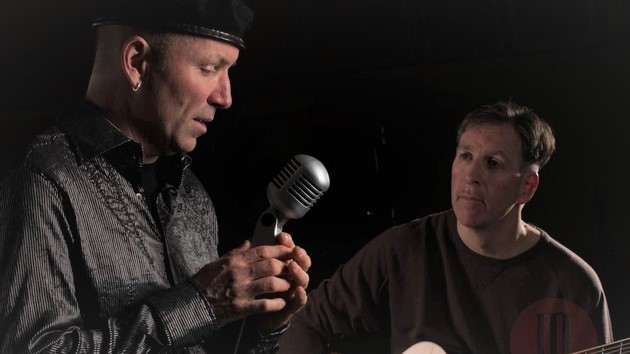
When Oakland native David Worm first heard a recording of Bobby McFerrin singing “Sightless Bird,” one of McFerrin’s most quietly exquisite and contemplative compositions, he had an epiphany. A successful trombone player, Worm had been performing with a Tower of Power/Chicago kind of a dance band but had been yearning to sing. “I thought, if I could sing like that, with that intention and that emotion, and with that kind of a feeling in the world, that would be everything,” said Worm. “And that’s what I have basically dedicated my life to.”
Little did Worm know at the time that just a few years later, he would be singing and touring nationally and internationally with McFerrin in his acclaimed 12-member a cappella group Voicestra. Worm and McFerrin have continued to collaborate over the years, including on one of McFerrin’s most interesting and innovative projects, circlesinging.
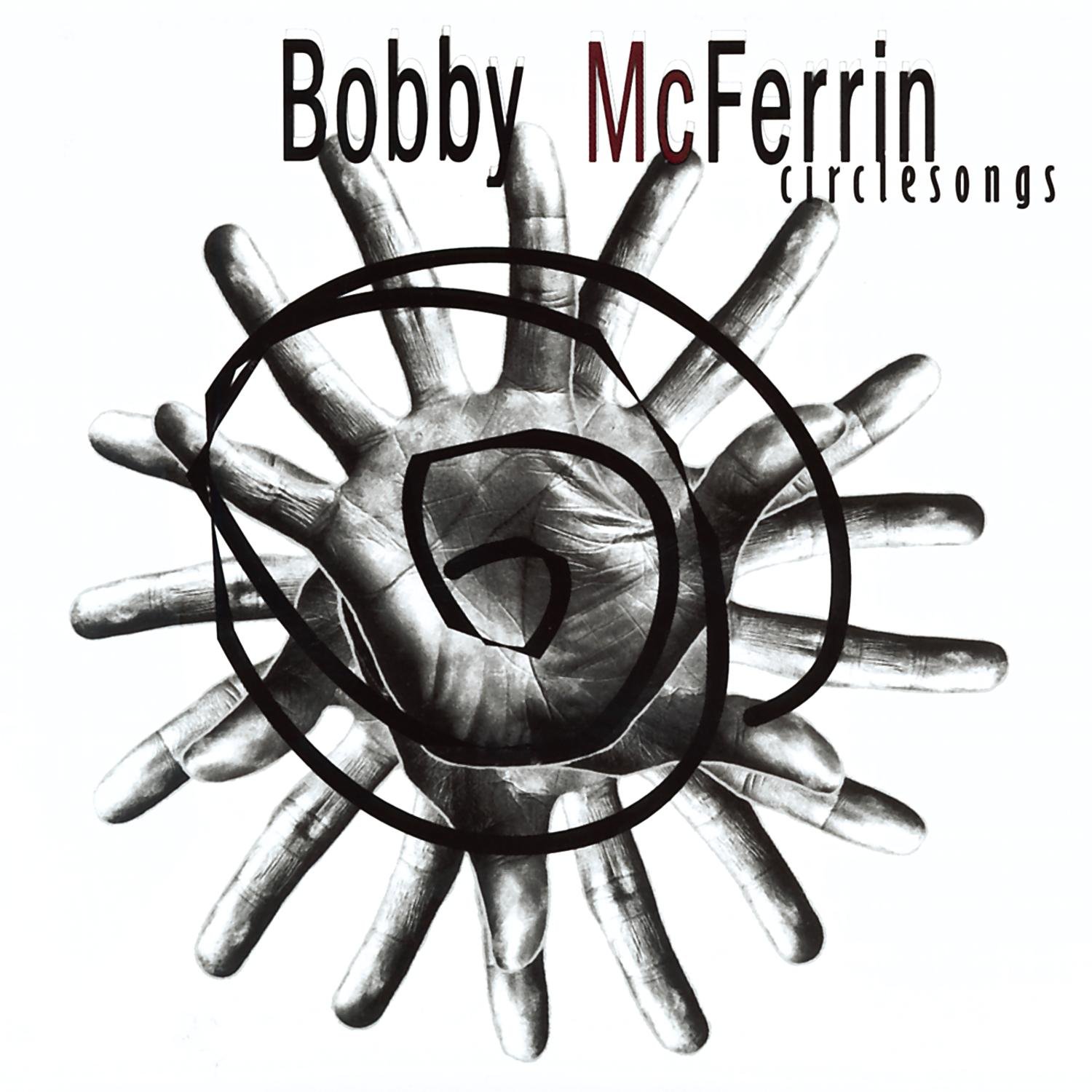
Voicestra recorded an album in 1997 called Circlesongs, based on an ancient singing tradition where people stand in a circle and improvise together, usually to commemorate an experience. Around 1990, McFerrin led the first singing, meditation, and chanting event at San Francisco’s Grace Cathedral that began on the evening of Dec. 30 and continued for 24 hours to ring in the New Year. It was so popular it became an annual event. Though McFerrin left town after several years, Worm, along with members of SoVoSó, We Be3, and Gimme5, other groups he sings in, have been keeping the flame alive.
Under the auspices of OneVoice CircleSingers, described on their website as “an improvisational singing community with a spiritual attitude,” they offer two-hour circlesinging sessions on the third Wednesday of every month, ongoing circlesinging workshops, and on Monday, Dec. 30, they are hosting and facilitating the 18th annual community circlesinging event, “Sing for Your Life!” at the First Congregational Church in Oakland, with continuous singing from noon until midnight.
So what exactly is circlesinging and what makes it so compelling? A recent chat with Worm by telephone revealed what this unusual and unique experience means to him, and to the community.
How did you get started in circlesinging?
Bobby started it in 1987 at the Noe Valley Ministry. He was living in Noe Valley and there was a call out for vocalists. I was an instrumentalist for years, but I had just started working towards singing — I felt that was my calling. I went and there was a circle of singers around a microphone and he had a box. He gave us each a pencil and a little piece of paper and said, “I want you to take this piece of paper, and I want you to write down your most cherished thought.”
We wrote it and then everybody put the paper in the box. Then he put the box in the middle of the circle and said, “Now we’re going to sing to all those emotions in the box. And we went for two hours. He directed it and made up the parts and it was exhilarating — it was something I had never experienced before, and the concept really inspired me.
How did you become involved with Bobby McFerrin and Voicestra?
After his success with “Don’t Worry Be Happy,” he wanted to start an orchestra of voices. He always had this idea that he wanted a large ensemble. So there was a call that went out to singers to audition and it was all over the world. There were over 600 people that came to the audition — it was kind of daunting. And then the next one was 300, and the next one was 150 and the next one was 50, and the next one was 30. And when the smoke cleared there were 13 of us.
How did the “Sing for Your Life!” get started at First Congregational Church in Oakland?
We started at Grace Cathedral with the 24-hour chant and then when Bobby left town, we were still doing it. But it became like a variety show and we felt it needed to be more focused and directed than that, so we took it to the Presidio Chapel for a while. After that we got an offer to bring it to the East Bay. There was a group called Arts First Oakland — a woman named Eve Lindi who knew about it and we decided to set it up as a 12-hour celebration from noon until midnight on the 30th of December.
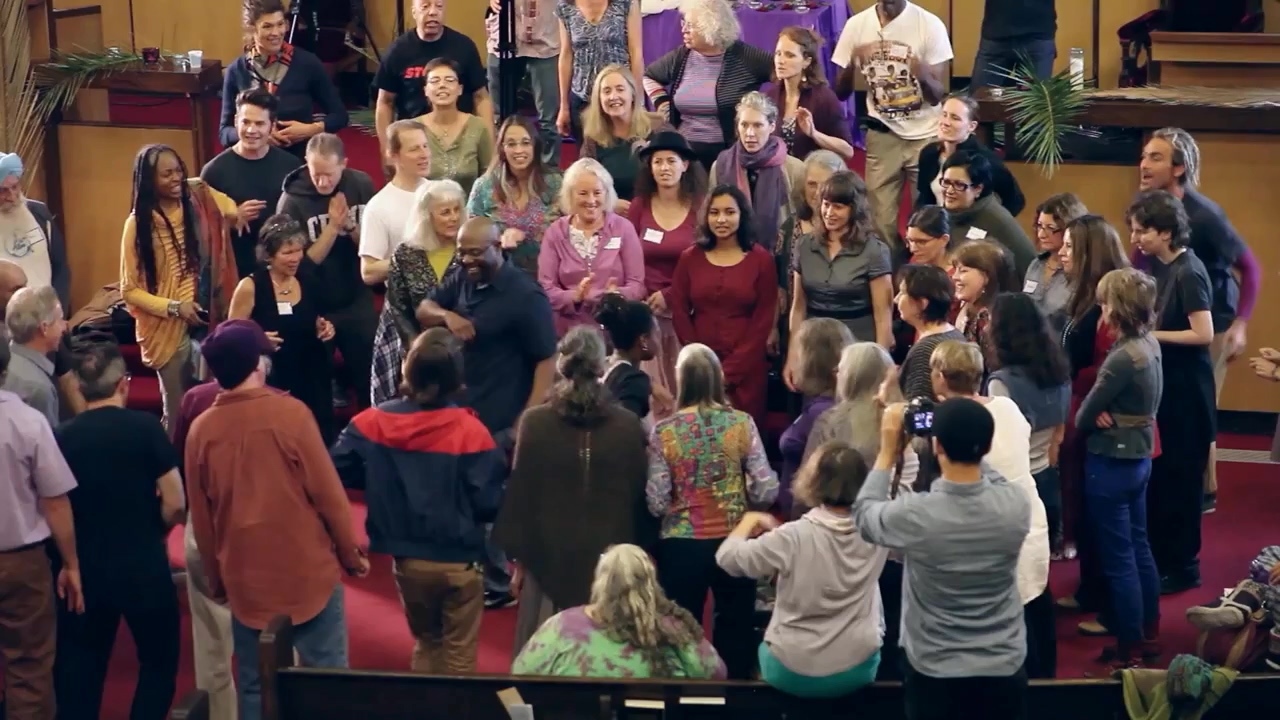
Is it just nonstop singing?
We don’t require people to sing the whole time. You can walk in and walk out, but there’s always singing going on in the sanctuary. What’s really nice about the First Congregational Church is that there are a lot of other things going on. We have a labyrinth, masseuses, folks bring food, and we have community rooms for folks to catch up and chat. There are contemplation stations that are like little mini-altars all around the sanctuary — many ways to get your mind channeled back into a positive nature, or just to be still and quiet for a little while. And we are close to Whole Foods and a bunch of other shops and restaurants in the area, so people can leave and come back.
Why do people come?
There’s a lot of reasons why people are drawn to it. It is so inspiring — people got touched by it and look forward to it. It’s like a breath of fresh air — an oasis before the New Year, and a way to get caught up and get the molecules back in the right place. Some folks come for the ability to show off what they can do as singers, and some folks come for the community and become friends over time. The newer kids just want to jam — inspired by the jam bands and all the different groups out there that are just making up music on the spot.
How many people do you typically get at “Sing for Your Life!”?
We get between 400 and 600 folks over the course of a 12-hour night. Back at Grace we got 1500-1700 people. It was wild. It went on for hours, with people sleeping in the pews and all kinds of crazy stuff.
Is circlesinging just a Bay Area thing?
It is done worldwide. There are communities all over the U.S., Europe, and in South America. We have a really strong group down in Brazil, and we have a group in Rwanda. There are a bunch of us that have been going to Europe for the last 15-20 years and doing circlesinging in Germany, Italy, Norway, and in the Netherlands — there is a graduate degree you can get there for conducting this kind of art form.
How old is circlesinging?
It is something as old as humanity. Folks would come out of the caves and celebrate the sunshine, or the crops or the birth of a child in a circle. This is our nature. And there are all of these spiritual components to it. There is something supernatural about this resonance, this vibration that all of us have. Absolutely everything on the planet vibrates.
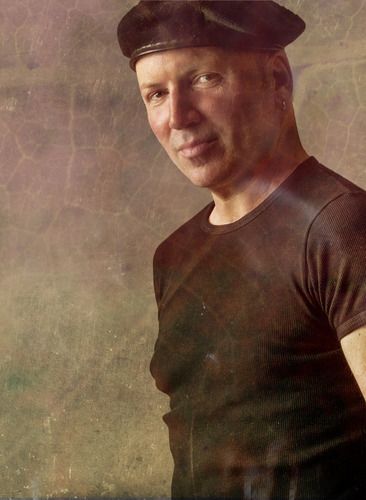
The music is inspired by the conductor or the facilitator and is then executed by the folks in the circle. They are given the part and then they sing it. You create an ostinato, and then you create another interconnected ostinato — you’re basically creating music in the circle. There’s the idea of blending, the idea of light and shade, and the dynamic feature. It’s almost like a human looping machine.
How do you fit everyone into the circle?
Sometimes it’s a circle that’s three deep and actually we prefer that. We want people to come in tight and close because we can hear the blend. And folks like that — they like to get in so they can hear what’s really happening.
What about people who are not actually singers?
Our motto is, if you can talk, then you can sing. We do have some folks who are harmonically challenged but the group soldiers on. The people with pitch problems are shepherded in and in some cases they get better. It’s an all-inclusive, mistake-free, judgment-free zone.
What inspires you to lead these circlesinging events?
I’ve decided that it’s my spirituality. I worked at the Newman Center [the Newman Hall-Holy Spirit Parish in Berkeley], and I lived at the Franciscan School of Theology [at the Graduate Theological Union in Berkeley] for a couple of years, searching around, trying to figure it out, and I have seen lives change. We have people who are homeless — living in their motorhome or a little truck or the back of a van. They come in and we see their transformation, which is truly incredible.
And I have seen miracles happen — I’ve seen things change people’s lives dramatically. And I feel like, if I can walk away from this life giving that feeling to someone for just a minute — because I get it all the time, and it’s sublime — then we’re doing our work — and that’s why I’m doing it.
What do you think “Sing for Your Life!" is really about?
It’s about humanity, and it’s about this commonality that we have and this incredible ability and gift to change and be emotional in a whole other way, beyond words. The communal aspect of it is so amazing, when everyone is singing as one and the blend is there, it’s incredible. I’ve seen it and I’ve experienced it, and I’ve walked off stages with tears of joy. We’re just trying to put a positive spin on the planet and bring something really precious with our voices. This is such an emotional time and I honestly feel that we can change the world doing it.

